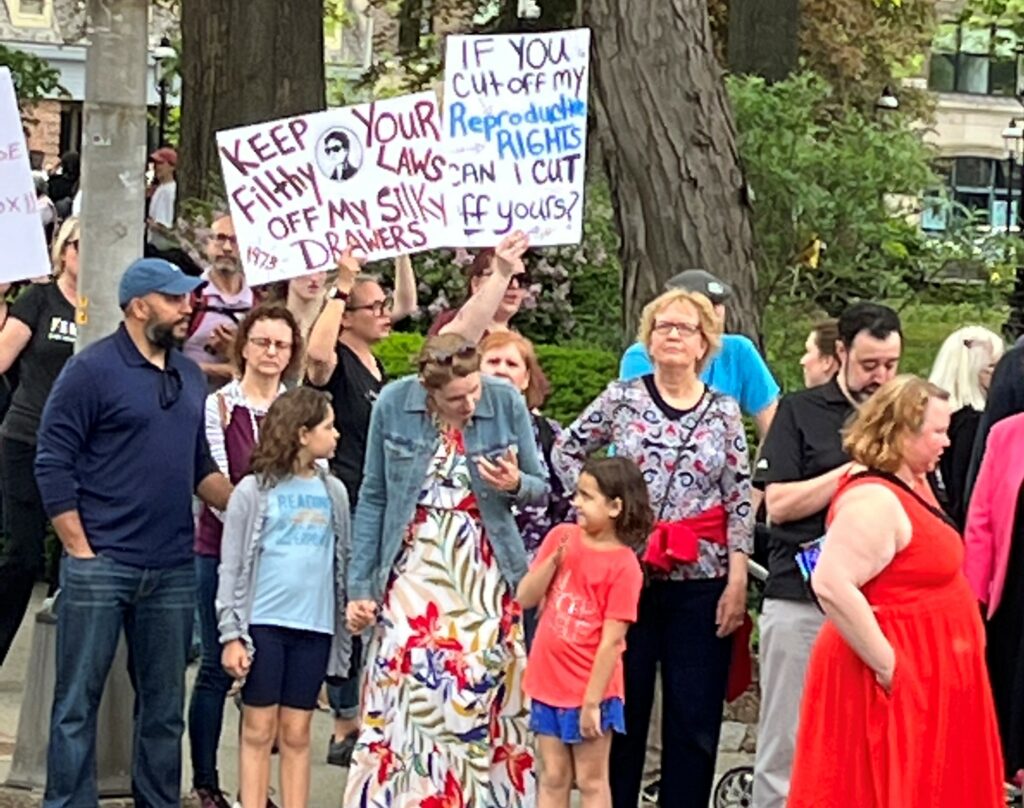Still not Equal Under the Law

“The struggle for women's suffrage, however, was only the first step toward full and equal participation of women in our Nation's life. In recent years, we have made other giant strides by attacking sex discrimination through our laws and by paving new avenues to equal economic opportunity for women. Today, in virtually every sector of our society, women are making important contributions to the quality of American life. And yet, much still remains to be done.” These words are from President Nixon’s Proclamation 4236 for Women's Equality Day, issued in 1973. Yet these words ring just as true today, almost 50 years later, as they did then. And the next sentence even more so — “American women, though they represent a majority of our population, still suffer from myriad forms of discrimination.”
The Dobbs decision demonstrates that progress is fragile. In the 50 years that Equal Rights Amendment (ERA) activists across the nation have been organizing for “Equality of rights, under the law,” its opponent’s arguments have been invalidated one by one, as gender stereotypes have evolved. And yet, with thirty eight states now on the record as having ratified the ERA, it is yet to be published in the constitution as our 29th amendment. The question stands though — will it be enough?
What will a United States Constitution that recognizes gender mean for women? Will it assist in combating state instituted laws attacking reproductive rights or voting rights that disenfranchise and harm women in underserved communities? How will the legal system shift to integrate intersectionality or address the role played by race when examining evidence of violence and crime that affect women of color? And ultimately, will it help increase representation and balance in the halls of power where the nation’s laws are crafted?
The ERA can only do so much. It is not a panacea for all gender parity issues; power and political representation matter. Sadly, women are woefully under-represented in boardrooms and in the majority of our legislative bodies across the nation. In 2014, New Jersey ranked 9th among the states with 30.8% of its legislative seats held by women. With progress stalled and the percentage of women at 34.2% after the 2021 election, it now ranks 19th as other states have made significant gains. Even the The Murphy administration, who came with an intention to appoint more diversity and women - has struggled to do so outside of its cabinet and Supreme Court nominees, and a report found that only 28% of appointments to the state’s most influential boards are held by women.
New Jersey is far too diverse for the overall balance of power in the state to remain as it stands currently. The 2021 census has further underscored that the diversity of our great state is not reflected in its halls of power. To achieve gender parity and inclusion of underrepresented communities — we need to be intentional about including voices from every community and identity at EVERY table where decisions are made. Only then can we create a truly fairer, stronger New Jersey! #RepresentationMatters #ElectWomen
Anjali Mehrotra is a feminist and activist. She is on the board of the National Organization for Women. For more than 50 years, NOW has been a leader in the fight to ratify and publish the ERA in the US Constitution at the 29th Amendment.






Thank you, Anjali. Great article. Love the photo.